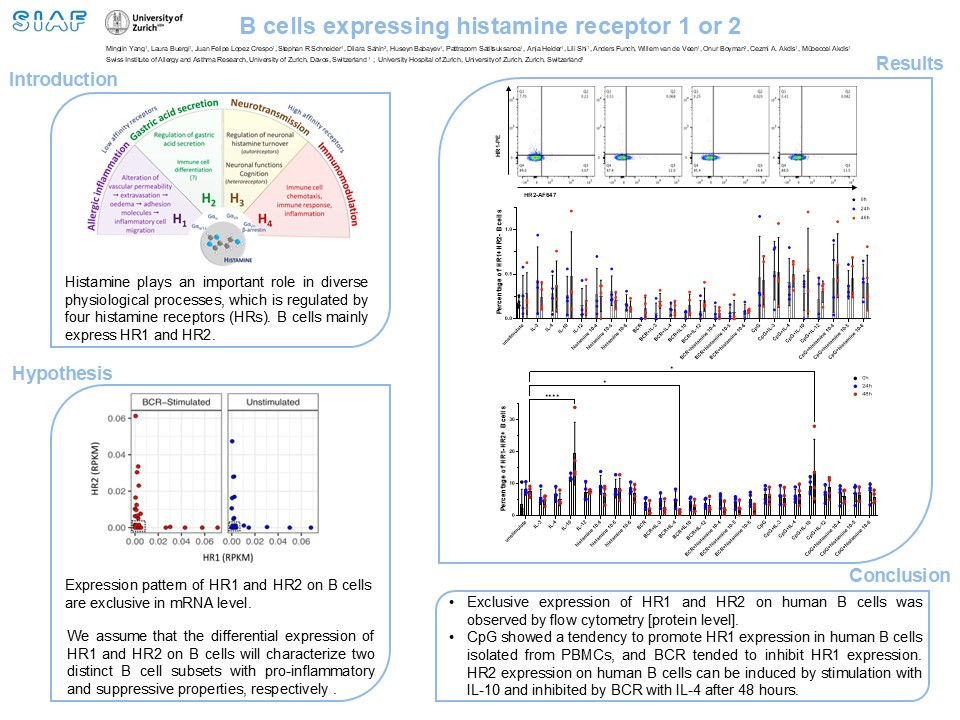Background
Histamine is a vasoactive amine involved in numerous human physiological and pathological processes including allergic diseases. Four histamine receptors (HR1, HR2, HR3, HR4) regulate various actions of histamine. According to earlier studies, HR1 and HR2 are predominantly expressed in T helper 1 (Th1) and Th2 cells, respectively. HR1 is a Ca++ flux-inducing activating receptor, and HR2 is an adenyl cyclase-stimulating suppressive receptor. HR1 promotes Th1-type responses, but Th1 and Th2-type responses are suppressed by HR2. Additionally, histamine affects the antibody production of B cells. HR1 signalling contributes to T-cell-independent humoral immune responses, while HR1 and HR2 play a role in T-cell-dependent humoral responses. Our group recently demonstrated that the mRNA expression of HR1 and HR2 on B cell clones is mutually exclusive. The differential expression of HR1 and HR2 on B cells characterize two distinct B cell subsets with pro-inflammatory and suppressive properties.
Methods
HR1/HR2 Plasmid transfection was carried out in Human embryonic kidney 293 (HEK293) cells following the Lipofectamine 3000 guide. Peripheral blood mononuclear cells (PBMCs) were isolated from healthy in-house donors using Biocoll. The cells were stimulated with stimuli, and subjected to flow cytometry after 0, 24 and 48h.
Results
By HRs plasmid transfection to HEK293, we confirmed the exclusive expression pattern of HR1 and HR2 on primary B cells from human PBMCs with FACS. CpG showed a tendency to promote HR1 expression, and BCR tended to inhibit HR1 expression. HR2 expression on human B cells can be induced by stimulation with IL-10 and inhibited by BCR with IL-4 after 48 hours. Stimulation with IL-10 for 48 hours increased the percentage of HR double-positive B cells.
Conclusion
These data provide essential contributions to a better understanding of the role of histamine in B cell regulation and its roles in immune tolerance.
